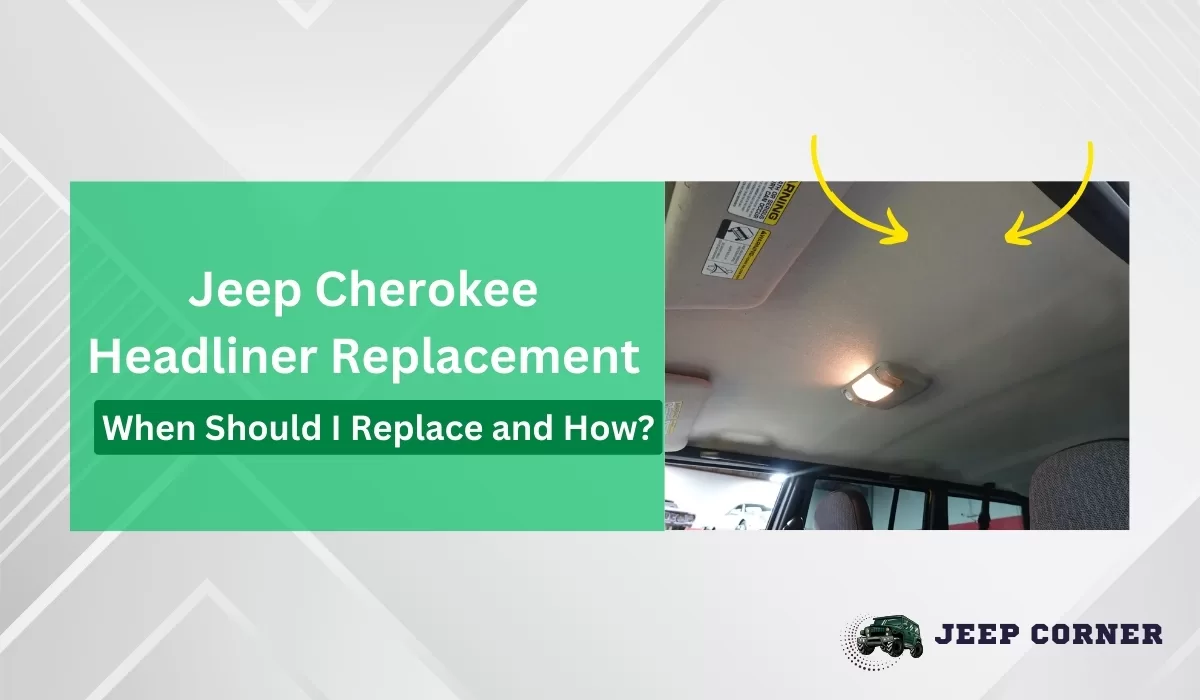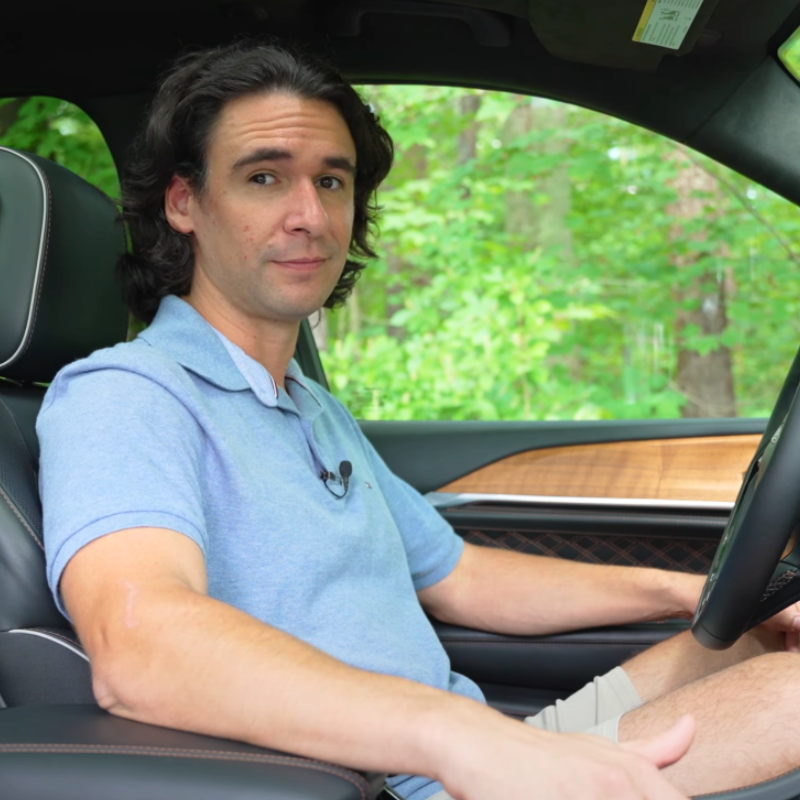In a Jeep Cherokee, headliners are barely noticeable, especially when they’re working as they should. They only get attention when cleaning or when they are damaged and begin to sag. So if they get damaged, when and how are they replaced?
Itâs best to replace the headliners as soon as they begin sagging. They help keep the car decent and provide insulation, preserving heat when the external temperatures are cold. Thus, the replacement can be done at home or by hiring a professional.
While headliners may seem expensive to replace, you can always use some DIY alternatives. Read on to learn when itâs the right time to replace the headliner in your Jeep Cherokee and how to do it.
Table of Contents
Jeep Cherokee Headliner: What Is It Exactly?
Headliners, also called roof lining, are usually materials used as the ceiling of your vehicle. These materials can be leather or fabric, and they’re secured by foam and glue on the roof board. The use of headliners dates as early as the 1900s when most manufacturers equipped their vehicles with a roof.
In a Jeep Cherokee, headliners are available in various materials and colors, allowing customization. They improve the car’s appearance and also cover most of the vehicleâs wiring. In most modern Jeep Cherokees using automatic temperature control, a quality headliner aids in insulation.
When Should I Replace a Headliner in a jeep Cherokee?
Not every damage on your headliner guarantees a replacement. If your Jeep Cherokee headliners are partially damaged or scratched, it’s best to repair them rather than replace them. Repairs are done using foam and an adhesive spray.
However, if the headliner sags, it requires replacement as soon as possible. While itâs possible to use your Jeep without a headliner, the vehicle is not energy efficient because it lacks temperature insulation. Also, it lacks sound insulation and looks unpleasant with the exposed wirings.
Luckily, Jeep Cherokee headliners can last up to 10 years if regularly maintained. This is an ample service period enough to warrant a new headliner. Besides, if installing a headliner is beyond your budget at the time, you can use some DIY alternatives which are affordable.
How Do I Replace Jeep Cherokee Headliners?
In most cases, assigning professionals with replacement work is always the logical option. However, replacing by yourself can be fun and allows you to customize the interior to your preference. Most importantly, it’s also cheaper compared to a repair shop.
The following are the steps to follow when replacing a Jeep Cherokee headliner.
Step 1: Prepare tools
Prepare all the tools you require to replace the headliner. They include:
- A Torx or flathead screwdriver
- Adhesive spray
- Brush
- Hobby knife
Step 2: Remove parts
Unscrew parts attached to the old headliner, including the seatbelt covers, lights, speaker, visors, and grab handles. You might also need to remove the upper (A, B, C) pillar panels.
Step 3: Remove the headliner
Unscrew and unclip the headliner board and remove it from the vehicleâs interior. Place the board on your working bench and remove the headliner material from the board.
Step 4: Preparations
Brush and scrape any foam remnants on the board from the previous material. This improves the adhesiveness of the foam used for the new material. Then place the new headliner material on the board.
Step 5: Apply the adhesive agent
Now fold the material a few inches at a time and spray the adhesive foam. Spray the material and the board for a stronger bond.
Step 6: Attach
Spread and attach the material to the glued board. Repeat the process on the other parts, and remember to stretch the materials evenly before glueing.
Step 7: Dry
Let the material dry, which can take up to an hour, depending on the adhesive spray used.
Step 8: Trimming
Cut off the excess material around the edges using a hobby knife. Also, create holes for the necessary parts, including the sunroof and roof lights.
Step 9: Return the board
Return the headliner board to the car and secure it with either clips or screws.
Step 10: Reinstall parts
Screw back all the parts and accessories you had removed earlier.
How Much Does a Jeep Cherokee Headliner Replacement Cost?
The Replacement cost depends on the model of your Jeep. On average, the cost for replacement in an upholstery shop is between $300 to $600. However, the material you use also determines the price.
Likewise, replacement materials like leather faux vinyl cost between $20 to $60. An adhesive spray is cheaper and costs between $12 and $30. Thus, the self-installation method saves you up to $150, plus you can customize it to your liking.
What Causes a Jeep Cherokee Headliner to Sag?
Headliner sagging happens when the glue holding the fabric losses its adhesive power. Most times, old age is the usual culprit as the vehicles go through years of expansion and contraction. However, some Jeep headliners damage sooner due to the following causes:
Overheating
If your vehicle is exposed to hours of exposure to sunlight, especially when packed, the glue becomes less adhesive. So park under the shade on hot and sunny days.
Humidity
Humidity trapped under the headliner can also promote sagging. This damage is common in Jeep Cherokees with sunroofs like the limited models. Hence, dry the headliner after washing, and always secure the sunroof when washing.
Lack of maintenance
Neglect on torn or damaged parts with time can extend the damage resulting in a sag. Repair damaged sections as soon as you notice them.
Damage to the roof
External damage or bending of the roof can cause the headliner to sag and fall apart. If your vehicle’s roof is damaged externally, replace or repair the headliner when repairing the roof.
You may also like
Key Takeaways
When time is on your side, it’s best to do most of your car repair work by yourself. This saves money and allows you to design the parts to your liking. However, it’s best to know when the replacement is needed and how to do it.
The Jeep Cherokee headliner is replaced if the damage is extensive or it begins to sag. After buying your desired material and adhesive agent, follow the steps in the article to install. Also, learn the possible causes of damage and exercise the necessary preventive measures.


